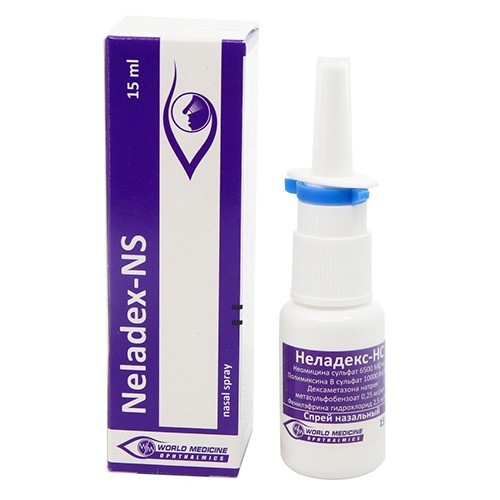
Children are among the most vulnerable groups when it comes to seasonal flu and viral infections—whether it’s a preschooler or a school-aged child. In addition to the fact that this age group often has a weaker immune system, the spread of viruses and influenza is also frequent due to their social activities. In schools and kindergartens, children are in close contact with each other and often do not strictly follow hygiene rules (such as using antibacterial sprays, frequent handwashing, or maintaining social distance when someone shows symptoms).
This is why respiratory infections are one of the most common problems parents face with children. Seasonal colds, flu, or allergic reactions often cause nasal congestion, breathing difficulties, and irritability—particularly challenging when a child is unable to properly express their symptoms. In such cases, parents seek a reliable and effective remedy that is both safe and fast-acting.
In this context, specialists recommend Neladex NS (Neladex Nasal Spray)—a combined nasal spray that can also be used in children. However, it is important to know exactly how to administer the medication, in what doses, and what to pay attention to in order to ensure the treatment is both effective and safe.
Neladex NS is specifically designed for the treatment of infectious-inflammatory diseases of the nasal cavity and paranasal sinuses. Its use in children is allowed from 2.5 years of age, but it is best to consult a pediatrician first, especially for younger children.
According to general recommendations, the dosage is as follows: for children aged 2.5–15 years, one spray in each nostril, three times a day. The treatment course usually lasts from 5 to 10 days, which is sufficient to relieve inflammation and reduce symptoms.
However, when it comes to children, the doctor’s involvement is essential. Only they should determine how frequently and for how long the spray should be used. Parents should remember not to extend the treatment longer than prescribed, as prolonged use may lead to undesirable effects.
The application is simple: the child should slightly tilt their head back, the spray applicator is gently inserted into each nostril, and the spray is released with a quick press. After the procedure, it is advisable to ask the child to breathe calmly for a few seconds so the solution spreads properly across the mucous membrane.
Like all medicines, Neladex NS may cause side effects, though these are rare.
According to specialists, the most common unwanted reactions include:
Mild skin rash or irritation
Headache
Bronchospasm (very rarely)
In rare cases, allergic reactions may occur. That’s why it’s crucial for parents to monitor the child’s condition—if itching, redness, breathing difficulties, or other unusual symptoms appear, the spray should be discontinued immediately and medical advice sought.
Neladex NS should also be used with caution in children with heart conditions, hypertension, or hormonal disorders, making prior consultation with a pediatrician or ENT specialist necessary.
Neladex NS is available in Georgia and can be purchased both in physical pharmacies and online, for example, at GPC pharmacy.
One of its main advantages is that it is available without a prescription, which makes it easier to use in everyday practice. However, doctors still recommend parents consult a pediatrician before giving it to children, to ensure correct dosage and treatment duration.
The product comes in a convenient 15 ml bottle equipped with a special applicator, allowing parents to administer the spray easily and precisely, without unnecessary effort.
Avoid contact with the eyes, as this can cause discomfort and irritation.
First of all, parents should remember that Neladex NS must not be used in children under 2.5 years of age. Even though it is available without prescription, pediatric consultation is essential.
It is also important to strictly follow the doctor’s instructions and not exceed the prescribed dosage. Keep in mind that this spray is not intended for simple nasal decongestion alone—thus, it must not be sprayed repeatedly throughout the day just for congestion relief.
Consider the child’s allergy history as well—if the child has ever had an allergic reaction to any ingredient (phenylephrine, neomycin, polymyxin, or dexamethasone), this should be reported to the doctor, and together an alternative should be chosen.
During treatment, parents should monitor the child’s overall condition—improvement should typically be felt within a few days. If there is no improvement or if symptoms worsen after 5–7 days, it is necessary to contact a doctor;
Specialists also emphasize that Neladex NS should not be used in parallel with other vasoconstrictor agents in children, as this could lead to unwanted effects.
For any parent, a child’s health is the highest priority. Nasal congestion, difficulty breathing, and infectious-inflammatory conditions are among the most common challenges that require timely and proper management.
This is why Neladex NS enjoys popularity in modern medicine—it combines anti-inflammatory, antimicrobial, and symptom-relieving properties, making it one of the most effective sprays available.
When used correctly with the right dosage and medical guidance, its use in children is both effective and safe. Easy application, fast results, and reliability make Neladex NS one of the most in-demand nasal sprays in Georgian pharmacies.